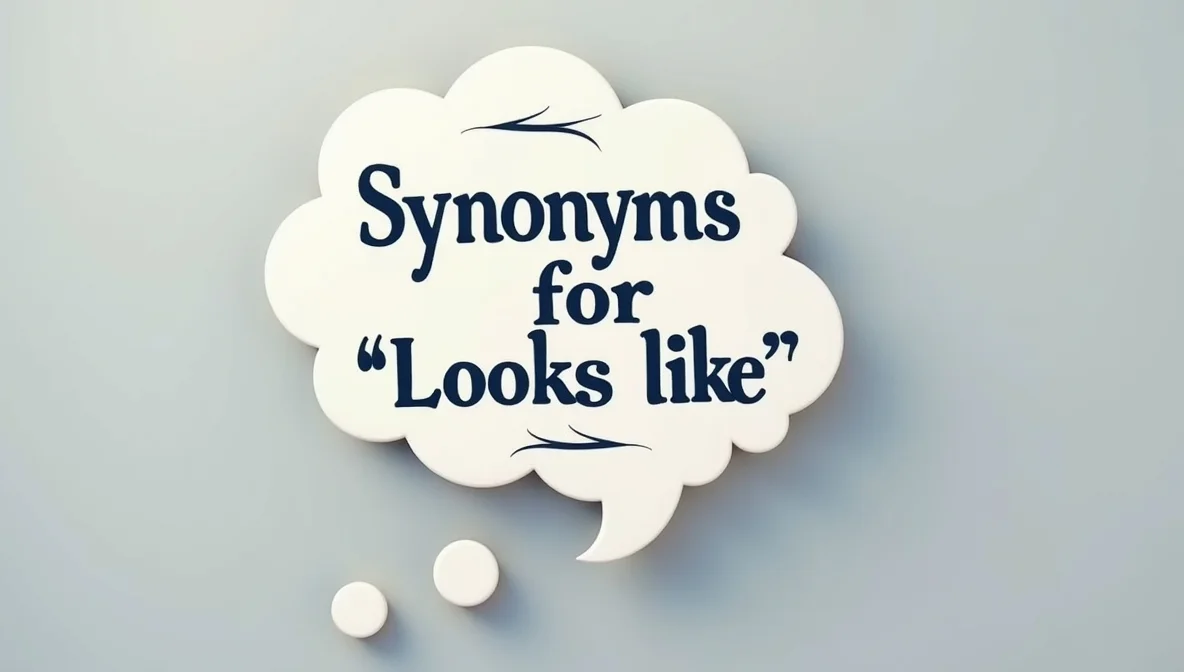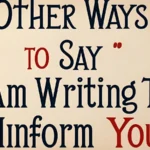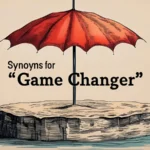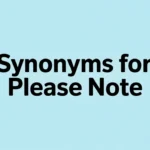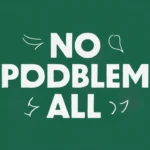In professional and academic writing, the phrase “looks like” can sometimes feel too casual or imprecise. Whether you’re drafting a business report, composing an academic paper, or writing a formal email, using more refined language can enhance clarity and credibility. By expanding your vocabulary with formal synonyms for “looks like,” you can communicate ideas with greater sophistication and nuance. Synonyms for “Looks Like”.
This article explores 15 refined alternatives to “looks like” that will help you sound more polished and articulate. These words and phrases can be used in different contexts, whether describing physical appearances, making comparisons, or discussing theoretical ideas. Each synonym comes with a detailed explanation of its usage, making it easy for you to incorporate them into your writing.
By the end of this guide, you’ll have a strong grasp of various synonyms that will help you express yourself more professionally. Let’s dive in and refine your language skills.
Resembles
The word “resembles” is a direct and formal alternative to “looks like.” It is commonly used in academic, professional, and scientific writing to indicate similarity in appearance, structure, or characteristics.
For example, in a research paper discussing two species, you might write: “The newly discovered bird species closely resembles the common sparrow in both size and coloration.” In this context, “resembles” is precise and neutral, making it an excellent choice for objective writing.
Unlike “looks like,” which can feel somewhat informal, “resembles” carries a more professional tone, making it suitable for various formal documents. Whether you are comparing trends, objects, or individuals, this word maintains clarity while ensuring your writing appears refined.
When using “resembles,” it’s also important to pair it with appropriate qualifiers such as “closely,” “strongly,” or “slightly” to fine-tune the degree of similarity. This ensures your description is both accurate and effective.
Read More: Other Ways to Say “Little Did I Know”
Appears Similar To
“Appears similar to” is a useful phrase when you need to indicate resemblance while maintaining a level of uncertainty. This phrase is particularly effective in analytical writing, where observations must be stated without implying absolute certainty.
For example, in a business report, you might say: “The new marketing strategy appears similar to the one used by our competitors last quarter.” This allows room for interpretation, acknowledging a resemblance without making a definitive claim.
In scientific contexts, “appears similar to” is valuable for discussing preliminary findings. For instance, “The test results appear similar to those obtained in previous experiments, but further analysis is required.” Here, the phrase maintains professionalism while suggesting that more data may be needed.
This alternative to “looks like” helps maintain a sophisticated and objective tone, making it ideal for academic papers, research studies, and corporate documents.
Bears a Resemblance To
“Bears a resemblance to” is a more elaborate way of saying “looks like,” often used in formal writing to indicate similarity. This phrase conveys a professional and polished tone, making it suitable for academic, legal, and business contexts.
For example, in an art critique, you might write: “The painting bears a strong resemblance to the works of the Renaissance period, particularly in its use of light and shadow.” This expression adds weight and sophistication to your comparison.
In a legal document, you might encounter a sentence such as: “The defendant’s handwriting bears a resemblance to the signature on the disputed contract.” This phrasing suggests similarity without making an outright assertion.
Using “bears a resemblance to” allows you to express similarity while maintaining a refined and objective tone. It’s a great choice when discussing appearances, patterns, or structural likenesses in formal settings.
Exhibits Characteristics Of
“Exhibits characteristics of” is a refined way to indicate that something shares qualities with another entity. Unlike “looks like,” this phrase emphasizes specific traits rather than overall appearance.
For example, in an academic setting, you might say: “The new policy exhibits characteristics of previous legislative reforms, particularly in its approach to taxation.” This phrasing shifts the focus from mere appearance to identifiable features.
In science and research, this phrase is especially useful. A medical report might state: “The symptoms exhibited by the patient exhibit characteristics of an autoimmune disorder, though further tests are required.” Here, the phrase allows for a nuanced discussion of similarities.
By using “exhibits characteristics of,” you maintain precision and formality, making it an excellent alternative to “looks like” in professional and academic writing.
Echoes
“Echoes” is a sophisticated alternative to “looks like” that suggests a resemblance in style, theme, or effect rather than physical appearance. It is commonly used in literary, artistic, and analytical discussions.
For instance, a film review might state: “The cinematography in this movie echoes the work of classic Hollywood directors, particularly in its use of dramatic lighting.” This phrase implies a stylistic resemblance rather than an exact replication.
Similarly, in historical analysis, you might write: “The current economic situation echoes the challenges faced during the Great Depression.” Here, “echoes” conveys a connection between past and present events.
This alternative adds depth and elegance to your writing, making it a valuable tool for discussions that go beyond surface-level similarities.
Corresponds to
“Corresponds to” is a refined synonym that conveys similarity in structure, meaning, or function rather than just appearance. It is often used in academic, legal, and technical writing.
For instance, in a research paper, you might write: “The experimental results correspond to the predictions made in the initial hypothesis.” Here, “corresponds to” suggests alignment between expectations and findings.
In business, a financial analyst might state: “The new revenue model corresponds to industry trends observed over the past decade.” This phrase establishes a formal connection between concepts.
Unlike “looks like,” which suggests visual similarity, “corresponds to” emphasizes alignment in a more conceptual or functional manner, making it ideal for structured discussions.
Reflects
“Reflects” is a versatile synonym that implies similarity in essence, representation, or meaning. It is commonly used in academic and analytical discussions.
For example, in a literary analysis, one might write: “The protagonist’s journey reflects the struggles of real-world activists fighting for social justice.” Here, “reflects” suggests that the fictional story parallels real-life events.
In corporate communication, you might encounter: “The company’s branding reflects its commitment to sustainability.” This indicates that the branding aligns with the company’s values.
This alternative is useful when discussing deeper connections beyond mere appearance, adding sophistication and nuance to formal writing.
Parallels
“Parallels” is a strong formal alternative that indicates a close resemblance or similarity in events, patterns, or themes.
For example, a historian might write: “The political unrest in the region parallels the events of the early 20th century.” This suggests that the situations share key similarities.
In legal writing, one might state: “The contractual obligations in this case parallel those established in previous agreements.” This use conveys structural similarity in legal documents.
“Parallels” is especially effective when comparing concepts or historical patterns, making it a valuable addition to formal writing.
Evokes
“Evokes” is a sophisticated synonym that suggests a resemblance in feeling, impression, or atmosphere rather than direct appearance.
For example, in an art critique, you might write: “The painting evokes the grandeur of Renaissance masterpieces through its use of color and composition.” This implies that the artwork shares stylistic qualities.
In marketing, a campaign might be described as: “The new advertisement evokes the nostalgia of classic 90s commercials.” This suggests an emotional connection rather than a literal resemblance.
Using “evokes” allows for a more nuanced comparison, making it ideal for discussions of art, literature, and branding.
Mirrors
“Mirrors” is a precise synonym that suggests an almost identical reflection or replication. It is commonly used in academic, business, and analytical writing.
For instance, in psychology, one might write: “The child’s behavior mirrors the actions of their parents, indicating learned habits.” This suggests a direct imitation.
In corporate reports, you might state: “The new business model mirrors successful strategies implemented by market leaders.” This conveys that the new model closely follows an existing one.
This alternative adds emphasis and clarity when describing strong similarities.
Conveys a Similarity to
“Conveys a similarity to” is a structured and formal phrase that emphasizes resemblance in a professional tone.
For example, in a legal document, one might write: “The defendant’s testimony conveys a similarity to previous witness statements.” This suggests a notable but not necessarily identical resemblance.
In product descriptions, a marketer might say: “The design of the latest smartphone conveys a similarity to luxury watch craftsmanship.” This adds sophistication and precision.
This phrase is particularly useful in situations requiring careful wording and measured comparisons.
Shares Attributes With
“Shares attributes with” highlights common qualities rather than direct appearance.
For example, a biologist might write: “This newly discovered species shares attributes with both reptiles and amphibians.” This implies common characteristics rather than an exact match.
In branding, one might say: “The company’s latest campaign shares attributes with previous successful marketing efforts.” This suggests a connection in approach.
Using this phrase ensures clarity when discussing overlapping qualities in a refined manner.
Aligns With
“Aligns with” is a polished alternative that suggests correspondence in values, objectives, or design rather than just appearance.
For example, a corporate strategist might say: “The new policy aligns with global sustainability goals.” This indicates compatibility rather than direct resemblance.
In academic discussions, one might write: “The findings align with existing theories in cognitive science.” This reinforces the connection between research and established knowledge.
This alternative is excellent for discussions requiring precision and formal tone.
Replicates
“Replicates” suggests a deliberate reproduction of an original model or concept.
For example, in engineering, one might write: “The prototype replicates the structural integrity of the original design.” This implies an intentional effort to copy key features.
In a legal context, a document might state: “The agreement replicates the terms outlined in the previous contract.” This ensures clarity in contractual discussions.
“Replicates” is particularly useful when discussing intentional similarities.
Suggests a Resemblance To
“Suggests a resemblance to” is a refined phrase ideal for cautious or tentative comparisons.
For example, a scientific report might state: “The data suggests a resemblance to patterns observed in previous studies.” This allows for interpretation while maintaining formal precision.
In business analysis, one might say: “The stock market’s recent fluctuations suggest a resemblance to past economic downturns.” This phrase adds careful wording to financial discussions.
This alternative is excellent for maintaining objectivity while drawing comparisons.
Imitates
“Imitates” is a strong synonym used when describing deliberate mimicry or reproduction.
For example, in fashion, one might write: “The fabric’s texture imitates the feel of genuine leather.” This implies a purposeful resemblance.
In psychology, one could say: “Children often imitate the speech patterns of their caregivers.” This suggests learned behavior.
Using “imitates” emphasizes intentional similarity, making it useful in technical discussions..
Presents a Similarity To
“Presents a similarity to” is a refined and structured phrase that conveys resemblance in a formal manner.
For example, in an academic discussion, you might write: “The newly proposed economic model presents a similarity to past Keynesian theories, particularly in its focus on government intervention.” This phrase suggests a conceptual likeness while maintaining a sophisticated tone.
In business, an analyst might state: “The current market trends present a similarity to those observed during previous economic downturns.” This allows for a professional comparison without making an absolute statement.
This alternative is particularly useful when drawing measured comparisons, making it ideal for academic and professional writing.
Displays Characteristics Of
“Displays characteristics of” is a precise phrase used to indicate shared traits without implying an exact match.
For instance, in a medical journal, you might find: “The patient’s symptoms display characteristics of autoimmune disorders, though further tests are required for confirmation.” This phrasing ensures accuracy while allowing room for interpretation.
In a corporate setting, you could write: “The startup’s growth strategy displays characteristics of successful market leaders, particularly in its focus on digital transformation.” This suggests key similarities while maintaining a formal tone.
This synonym is highly effective in analytical discussions where careful wording is essential.
Can Be Compared To
“Can be compared to” is a versatile alternative that allows for formal comparisons between concepts, trends, or entities.
For example, a historian might write: “The social unrest in the early 21st century can be compared to the revolutionary movements of the past, given their similar demands for systemic change.” This phrase draws parallels in a professional manner.
In science, you might state: “The chemical properties of this new compound can be compared to those of traditional catalysts, though further research is needed.” This suggests a resemblance while maintaining objectivity.
Using “can be compared to” ensures that comparisons remain clear and well-structured in professional writing.
Suggests Parallels With
“Suggests parallels with” is an advanced synonym that implies a resemblance between ideas, themes, or structures.
For instance, in a literature review, you could write: “The novel’s depiction of social class struggles suggests parallels with 19th-century realist literature.” This conveys a thematic resemblance in a sophisticated way.
In economics, a report might state: “The current inflation patterns suggest parallels with historical economic cycles, particularly in their impact on consumer spending.” This phrase helps highlight similarities in a refined manner.
This alternative is particularly effective in analytical and academic discussions, where nuanced comparisons are required.
Conclusion
Expanding your vocabulary with formal synonyms for “looks like” enhances both the clarity and professionalism of your writing. Whether you are drafting an academic paper, a legal document, or a corporate report, using precise language allows you to communicate ideas with greater sophistication.
From “presents a similarity to” and “displays characteristics of” to “can be compared to” and “suggests parallels with,” these alternatives provide you with nuanced ways to express resemblance. Each synonym offers a unique perspective, ensuring that your writing remains polished and effective.
By incorporating these refined phrases into your language, you will elevate the quality of your writing, making it more precise, authoritative, and engaging. Next time you need to describe a similarity, choose one of these formal alternatives to maintain clarity and professionalism.

James Carter is a language expert at WordSeekerz.com, dedicated to making English grammar and vocabulary simple and engaging. Explore more at WordSeekerz.com and enhance your language journey today!
